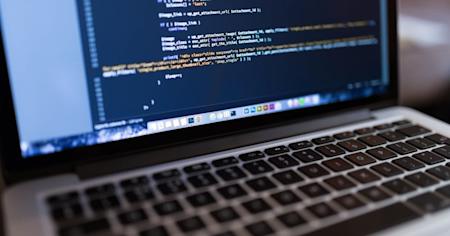Bij het beheren van meerdere externe apparaten is het uitvoeren van externe opdrachten cruciaal. Het verzenden van shell- en opdrachtregelinstructies in een gedistribueerde werkomgeving maakt het gemakkelijker om downtime te verminderen en herstel te versnellen over endpoints, daarom is het essentieel voor probleemoplossing en automatisering op schaal. Het moeilijkste deel is echter het vinden van een oplossing met mogelijkheden voor een externe opdrachtprompt.
Gelukkig biedt Splashtop AEM (Autonomous Endpoint Management) een oplossing: de Remote Command Prompt-functie is ontworpen om de uitvoering van achtergrondcommando's te stroomlijnen, waardoor IT-beheerders eenvoudig commando's kunnen uitvoeren, zelfs zonder een volledige remote access sessie te starten.
Met dat in gedachten, laten we remote command execution verkennen, wat het waardevol maakt, en hoe de Splashtop AEM remote command prompt-functie kan helpen om command-line toegang te stroomlijnen.
Wat is de functie voor Externe Opdrachtregel / Achtergrondscriptuitvoering?
Definitie
De Remote Command Prompt is een veilige tool in Splashtop AEM waarmee IT-beheerders shell- of command-line instructies kunnen uitvoeren op remote computers. Het werkt zowel op Windows (PowerShell) als macOS (Terminal) en kan worden gebruikt zonder een remote desktop sessie te starten, waardoor het een snel en krachtig hulpmiddel is voor het uitvoeren van remote commando's.
De Splashtop AEM Remote Command Prompt ondersteunt zowel eenmalige als scripts en taken commando-uitvoeringen, waardoor IT-teams de flexibiliteit hebben om met gemak zo weinig of zoveel externe apparaten te beheren als nodig is. Dit biedt ongekende snelheid en gemak voor het beheren van externe omgevingen en gedistribueerde eindpunten.
Hoe werkt het
Splashtop AEM’s Remote Command Prompt is niet alleen krachtig, het is ook gemakkelijk te gebruiken. Je kunt opdrachten plannen en uitvoeren in een paar snelle stappen:
Binnen de Splashtop-console klik je op het Remote Command-icoon naast het apparaat waar je het commando naartoe wilt sturen.
Log in met je Mac of Windows admin-gegevens om je account te verifiëren.
Gebruik PowerShell op Windows (versie 4.0 en hoger) of Terminal op macOS om commando's uit te voeren; deze worden op de achtergrond uitgevoerd om te voorkomen dat het werk op het verbonden apparaat wordt onderbroken.
Vanuit het remote command-venster kun je ook een remote sessie starten, je remote command-geschiedenis opslaan en met een klik de verbinding verbreken. Wanneer je de sessie sluit, kan deze worden opgeslagen als een command-geschiedenislogboek of worden gesloten zonder op te slaan.
Waarom Remote Command Prompt Belangrijk is voor IT-teams
Met dat alles gezegd, vragen sommigen zich nu misschien af wat de voordelen zijn van het gebruik van Externe Opdrachtprompts, en waarvoor ze kunnen worden gebruikt dat je niet al kunt doen met externe toegang en ondersteuning?
Een van de grootste voordelen van Remote Command Prompts is de mogelijkheid om op de achtergrond te draaien. Beheerders kunnen direct diagnostische commando's uitvoeren, problemen oplossen en updates installeren zonder de eindgebruiker te storen, zodat het werk ononderbroken kan doorgaan.
Bovendien stelt het gebruik van scripts en taken beheerders in staat om scripts tegelijkertijd op meerdere eindpunten uit te voeren. Met remote automatisering kun je commando's verzenden over een gedistribueerde omgeving, waardoor het eenvoudig is om een externe werkomgeving te beheren en te ondersteunen.
Dit maakt Externe Opdrachtprompt ideaal voor snelle oplossingen. IT-leiders en beheerders kunnen snel opdrachten verzenden om problemen te repareren of diagnostiek uit te voeren zonder volledige externe toegang nodig te hebben, waardoor ze efficiënt problemen kunnen aanpakken zonder het werk van de eindgebruiker te onderbreken.
Als bonus logt het gebruik van Splashtop AEM’s Remote Command Prompt wat er is uitgevoerd en door wie, wat een belangrijk hulpmiddel is voor auditing en IT-naleving, evenals een manier om probleemoplossing en verantwoordelijkheid te verbeteren. Aangezien gebruikers admin-gegevens nodig hebben om in te loggen en sessies worden opgeslagen in de opdrachtgeschiedenislogboeken, is het eenvoudig om records bij te houden en te raadplegen om wijzigingen te volgen en verdachte activiteiten op te sporen.
Belangrijke Gebruiksscenario's
Natuurlijk, zeggen hoe Remote Command Prompt ondersteuning en probleemoplossing gemakkelijk maakt is één ding, maar wat zijn enkele praktische toepassingen voor remote commando-uitvoering? Er zijn verschillende scenario's waarin het uitvoeren van remote commando's voordelig kan zijn voor zowel IT-teams als eindgebruikers.
Bijvoorbeeld, het wissen van tijdelijke bestanden en caches is een veelvoorkomende maar noodzakelijke onderhoudstaak. Met Remote Command Prompt kunnen beheerders, MSP's en andere IT-leiders een commando naar apparaten sturen om die bestanden te wissen zonder op elk apparaat afzonderlijk in te loggen. Evenzo kan Remote Command Prompt worden gebruikt om lokale schijfopruiming te automatiseren om apparaten soepel te laten draaien, evenals om wijzigingen zoals registerinstellingen te automatiseren.
Remote Command Prompt is ook een krachtig hulpmiddel voor remote diagnostiek. IT-beheerders kunnen het gebruiken om systeeminformatie te verzamelen met opdrachten zoals "ipconfig" of "whoami," waardoor het eenvoudig is om waardevolle informatie te verzamelen en diagnostiek uit te voeren zonder eindgebruikers te storen.
Natuurlijk is Remote Command Prompt ook een krachtig hulpmiddel voor IT-ondersteuning en -onderhoud. IT-beheerders kunnen de command-prompts gebruiken voor snelle oplossingen tijdens beveiligingsincidenten of storingen, en essentiële beveiligingsopdrachten en updates naar remote apparaten sturen. Prompts kunnen zelfs worden gebruikt om services opnieuw te starten of remote apparaten opnieuw op te starten na updates, zodat zelfs onbemande apparaten goed worden onderhouden en up-to-date blijven.
Hoe Splashtop AEM Externe Opdrachten Veilig Uitvoert
Cybersecurity is een grote zorg voor bedrijven in verschillende sectoren, vooral bij het gebruik van tools die hen in staat stellen om op afstand toegang te krijgen tot en apparaten te beheren binnen hun netwerk. IT-teams die zich zorgen maken over de veiligheid van het verzenden van remote commands naar endpoints zullen opgelucht zijn te weten dat Splashtop AEM is gebouwd met veiligheid in gedachten en meerdere beveiligingsprotocollen gebruikt om endpoints en netwerken te beschermen.
Ten eerste werkt Remote Command Prompt binnen Splashtop’s AES-256 versleutelde verbindingsframework, dat end-to-end encryptie biedt, samen met beveiligingsfuncties die zijn ontworpen om te voldoen aan een breed scala aan industriële en overheidsnormen en -voorschriften.
Bovendien vereist Remote Command Prompt beheerdersreferenties om toegang te krijgen tot apparaten, dus alleen beheerders hebben toegang. Zodra gevalideerd, kunnen beheerders acties loggen, scripts opslaan en gebruik controleren om activiteit te monitoren en verdachte gedragingen te observeren.
Remote Command Prompt ondersteunt ook PowerShell met veilige authenticatie, wat ervoor zorgt dat alleen geautoriseerde, geauthenticeerde gebruikers kunnen inloggen en opdrachten kunnen verzenden.
Hoe de Externe Opdrachtprompt in Splashtop AEM te Gebruiken
Als de Splashtop AEM Externe Opdrachtprompt klinkt als iets waar je bedrijf baat bij kan hebben, is het eenvoudig te gebruiken. Volg gewoon deze snelle stappen:
Ga naar de Splashtop-console en klik op het "C:\” icoon naast het endpoint dat je wilt
Verifieer je login met je beheerdersreferenties.
Voer de opdracht of script in (ofwel in de PowerShell- of terminalsyntax, afhankelijk van het apparaat)
Met de opdracht of het script ingevoerd, kun je de Externe Opdrachtprompt vertellen om de opdracht uit te voeren, de uitvoer te monitoren en (als je dat wilt) logboek/geschiedenis opslaan.
Sluit de sessie, of als je verbinding wilt maken met het remote device, kun je vanuit dezelfde interface een remote access sessie starten.
Als je opdrachten moet uitvoeren op meerdere apparaten, kan de scripts en taken geplande opdrachtfunctie worden gebruikt voor bulktaakimplementatie. Deze functie stelt je in staat om opdrachten naar zoveel eindpunten als nodig te sturen voor bulktaakimplementatie, updates en meer.
Je kunt scripts en taken uitvoeren in een paar snelle stappen:
Ga vanuit de Splashtop-console naar Beheer → 1-to-Many Acties.
Selecteer Actie Maken en selecteer het type actie dat je wilt uitvoeren.
Stel de Actienaam en Actie-instellingen in.
Klik op Opslaan en Uitvoeren om de actie onmiddellijk uit te voeren, of Opslaan en Inplannen om het op een bepaald tijdstip in te plannen.
Selecteer de computers waarop je de actie wilt uitvoeren, voer je inloggegevens in en klik op Uitvoeren.
Zodra dat is gedaan, ben je helemaal klaar. Het op afstand verzenden van commandoprompts is nog nooit zo eenvoudig geweest, ongeacht hoeveel endpoints je beheert.
Aan de slag met Splashtop AEM
Of je nu een IT-beheerder bent die een remote omgeving beheert of een Managed Service Provider die meerdere klanten ondersteunt, de Remote Command Prompt van Splashtop AEM kan je helpen de kloof tussen zichtbaarheid en actie te overbruggen. Het is nu snel, handig en eenvoudig om commandoprompts over je netwerk te verzenden zonder de eindgebruiker te storen of een remote access sessie te starten, zodat je apparaten overal met gemak kunt beheren.
Remote Command Prompt brengt ongekende snelheid, veiligheid en schaalbaarheid naar IT-operaties, waardoor IT-teams en MSP's elk aantal endpoints vanuit één plek kunnen beheren. Je kunt zelf zien hoe achtergrondcommando-uitvoering het onderhoud van endpoints gemakkelijker maakt wanneer je begint met een gratis proefperiode van Splashtop AEM.
Ervaar Splashtop AEM en Externe Opdrachtprompt zelf vandaag nog:





